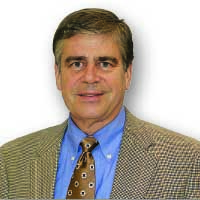Color by numbers? Not in turf: Yellow turf result of many environmental variables
 Summer’s closure always brings a time for agronomic reflection. Like past summers, predicting what the weather will do is difficult. Across the United States some areas were too hot, dry, or wet. Weather’s impact on turf is difficult to predict, as is the turf’s response to the stress.
Summer’s closure always brings a time for agronomic reflection. Like past summers, predicting what the weather will do is difficult. Across the United States some areas were too hot, dry, or wet. Weather’s impact on turf is difficult to predict, as is the turf’s response to the stress.
This year several golf courses experienced periods of high temperatures, along with excessive rainfall resulting in highly stressed turf. Explaining the impact of the environmental conditions and the plant’s response to a member or club official often is complicated. As a club member recently said to me, “It’s not like 2 + 2 equals 4.” I found that response to be enlightening.
Whether you are in the United States, China or on the moon, if you are on Mount Everest or in the Brazilian rainforest, 2 + 2 always equals 4. However, when dealing with living things like plants, the stresses that occur do not always add up to the same response.
For example, to visually compare an inanimate object with a living object, I often use a dead and a living sparrow. If I were to take a dead sparrow and throw it up in the air I could probably calculate its flight path (as well as my path to directly go wash my hands). However, in the case of the living sparrow, if I threw it up in the air I would not have a clue to where it was going or its flight pattern. Life is complex.
When golf course turf turns yellow or declines we often look for the single cause. And if that cause is identified it must be the same problem on all the courses in the region that have similar symptoms, right?
From my experience this is often not the case. When you look at yellow turf and the variables associated like type of soil, grass species, organic matter accumulation and management practices (just to name a few) the complexity of the issue becomes evident. Now you add the variability that occurs from golf course to golf course and the solution to the “yellowing” becomes even more complex.
Given that golf courses are unique biological entities we need to pay attention to the specific course conditions present. A good comparison would be how cancer research and treatment has evolved over the last 10 to 15 years. Physicians using molecular techniques can identify individually genetic changes in a cancer tumor, and how the surrounding tissue, or as it is sometimes referred to, the “microclimate,” influences tumor behavior. I find it fascinating that tumor cells are continually communicating with the surrounding “microclimate.”
By knowing the genetic alterations in the cancer tumor, and the responses due to the “microenvironment,” targeted therapies and bio markers will become available to treat cancer in an individual. It is truly personal
treatment.
We do not quite have that level of “personalized plant treatment” in turf, but I think being aware of the unique biological characteristics of one’s golf course allows for targeting treatment.
Returning to my yellow turf there are many reasons for the yellowing, including environmental extremes like a lack of light, anaerobic soil conditions, a phytotoxic response to a chemical(s), or from a disease. Diagnosing the exact cause of the yellowing, as most of us know, is not that easy. Given that, if I were to visit two golf courses that had identical yellowing, sent samples from both that confirmed the presence of the bacterial disease Acidovorax, would that be a good enough diagnosis? What if I told you on one of the golf courses turf decline was occurring while the second golf course the turf quality was fine? What would your recommendation be?
It just goes to show, when dealing with living things, there is no such thing as simple math.
Karl Danneberger, Ph.D., Golfdom’s science editor and a professor at The Ohio State University, can be reached at
danneberger.1@osu.edu.








